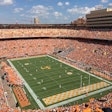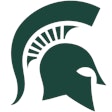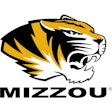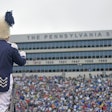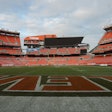Copyright 2017 Digital First Media
All Rights Reserved
The Daily News of Los Angeles
Say hello to the San Di-, uh, Los Angeles Chargers.
Yes, this franchise is set to move north up the I-5, something that even new head coach Anthony Lynn forget momentarily at his introductory press conference last month. They will practice in Costa Mesa and play at Carson's StubHub Center, which for the next two seasons will serve as the NFL's smallest stadium.
And Los Angeles, which has a reputation as a fairweather sports town, will have yet another entertainment option.
The Chargers are betting that they can compete with the Rams, who moved back to the Southland a year earlier and with a larger existing fanbase. Will they succeed? Here are their next steps as\x{feff} the offseason begins.
1. Sell themselves to L.A.
More than five decades ago, then-owner Barron Hilton explained the Chargers' move to San Diego in blunt terms: "We can't compete in the same market with the Rams."
How much have things changed since 1960? For one, the population of Los Angeles County has nearly doubled, now topping 10 million according to latest government estimates. Add in Orange County and Riverside County, and that's another five million people in the metro area.
Winning will provide the quickest route to new eyeballs, but the Chargers have also started laying the groundwork in other ways, reaching out to local community and business leaders. The team's top brass have acknowledged that winning over L.A. won't be easy, but they've also pushed back against the idea that their success and the Rams' success are mutually exclusive.
From AB: NFL's Chargers Announce Relocation
But while the financial interests of the two franchises may be intertwined - they will, after all, soon share a new stadium in Inglewood - it's tough to imagine undecided sports fans forming deep, lasting ties with both teams. A.G. Spanos, president of business operations, said recently that the Chargers have received "thousands" of season ticket deposits, but declined to reveal a specific number.
2. Move to L.A. (or Orange County, rather)
They may be the Los Angeles Chargers, but for the next few months, they will continue working out of a building emblazoned with a "SAN DIEGO CHARGERS" sign.
Unlike the Rams, who moved from St. Louis to Southern California by April 2016, the Chargers will stay in Murphy Canyon through OTAs in June. After that, they will have until the end of July to vacate the premises and set up temporary headquarters in Costa Mesa.
One word of advice? Don't mention the challenges of the move in October and November, a temptation erstwhile Rams coach Jeff Fisher couldn't resist before his late-season firing.
3. Mesh the coaching staff
Lynn is a first-time head coach, but the Chargers' staff is mixing new in with the old.
The biggest holdover is offensive coordinator Ken Whisenhunt, who won a Super Bowl with the Steelers in that same role and reached another as Cardinals head coach. He and Lynn - who has a long track record with running backs - will get to tinker with an offense helmed by quarterback Philip Rivers, who at 35 years old can still paper over some of the other flaws on the roster.
Lynn also kept defensive backs coach Ron Milus and defensive line coach Giff Smith, and is expected to retain receivers coach Nick Sirianni. While those names provide some continuity for players, Lynn's biggest moves were hiring Gus Bradley and George Stewart to oversee the defense and special teams, respectively.
NFL.com ranked Lynn as the best coaching hire this offseason - but based that assessment in large part on his overall staff.
4. Figure out Ingram
The Chargers are projected to have just under $22 million in cap space, ahead of only six other NFL teams. They also have 13 players entering unrestricted free agency, including linebacker Melvin Ingram.
The former first-round pick has broken out since the start of 2015, notching 18.5 sacks after registering just five through his first three seasons. However, that also means that outside interest could make him too expensive for the Chargers to lock in long-term.
If the two parties can't reach a deal, the team could opt to exercise a franchise tag on Ingram, which would pay him upwards of $14 million to keep him in the fold for 2017.
5. Stay healthy
On what felt like a weekly basis in 2016, Chargers went down with season-ending injuries - including receiver Keenan Allen and former Pro Bowl cornerback Jason Verrett. The team ended its final San Diego campaign with 21 names on injured reserve, more than anyone else in the league.
That tally doesn't include players like running back Melvin Gordon, who missed three full games with knee and hip injuries and held himself out of the Pro Bowl for precautionary reasons.
This was likely a statistical anomaly, and the Chargers should be healthier in 2017 even by simple regression to the mean. But when they start offseason workouts, it'll be best to work the wounded back in slowly.
Read More of Today's AB Headlines
Subscribe to Our Daily E-Newsletter
Terms and Conditions Privacy Policy





















